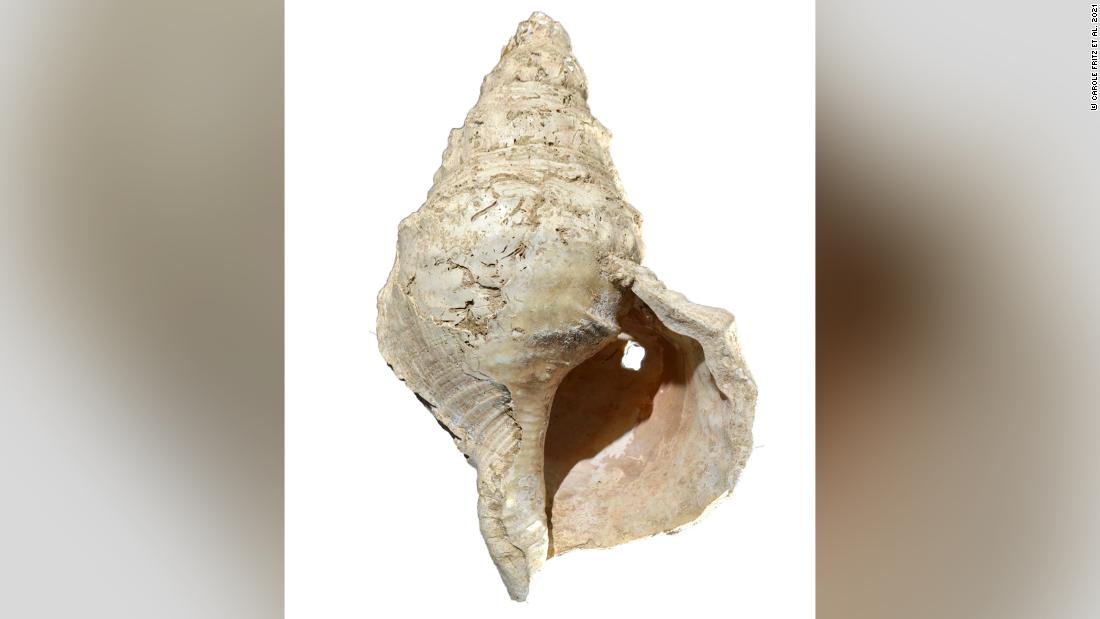
The shell was largely overlooked when it was found in Marsoulas Cave in the Pyrenees in 1931, but researchers at the French National Center for Scientific Research (CNRS); the Toulouse museum; the University of Toulouse – Jean Jaurès; and the Musée du quai Branly – Jacques-Chirac have released an audio recording as part of a new study published Wednesday.

The people who made the instrument were probably hunter-gatherers. Credit: © Carole Fritz et al. 2021 / Gilles Tosello
The end of the shell of the sea snail (Charonia lampas) is broken to form an opening 1.4 inches in diameter. The point is the hardest part of the scale, researchers said in a press release, so the break is not accidental.
There is also evidence of cutting, perforating and decorating with hematite, a red pigment used in the cave paintings that make Marsoulas Cave famous.
Researchers worked with a horn player to verify their hypothesis that the shell was used to produce sounds, allowing the musician to create sounds close to the notes C, C sharp, and D.
The fact that the opening is irregular and covered with an organic coating led researchers to believe that a mouthpiece might have been originally attached.
The presence of mouthpieces on other conch shells from around the world adds to this interpretation, says Gilles Tosello, co-author of the study and archaeologist at the University of Toulouse.
Carbon dating done on charcoal and bear bone from the same archaeological layer as the shell shows that the objects date back to 18,000 years ago, researchers said. This makes the shell the oldest wind instrument of its kind.
However, the people who made it didn’t necessarily use the shell to create what we think of as music, Tosello told CNN.
“It could have been used as a means of communication,” he said, explaining that it may have been used in rituals related to cave art.
Researchers also found similarities to materials found in caves along the Atlantic coast in northern Spain, reinforcing the idea that these people were nomadic hunter-gatherers who migrated between the Atlantic coast and the Pyrenees, Tosello said.
They would have to travel around because they would run out of animals to hunt if they stayed in one place for too long, he explained.
Researchers will now work on an accurate 3-D replica of the shell to learn about a small 0.4-inch-diameter perforation in the case, Tosello told CNN. They will also investigate how far the sound can travel from the shell.